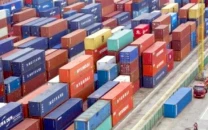Pakistan’s economic debate overlooks structural weaknesses that constrain growth
Institutional fragmentation leads to inconsistent policies, investor confusion

In the cacophony of Pakistan's economic discourse, where inflation, debt and International Monetary Fund (IMF) negotiations dominate headlines, some of the most critical issues remain conspicuously absent.
These are not the loud crises that make it to talk shows or budget speeches, but the quiet, structural deficiencies that silently erode our economic potential. If Pakistan is to chart a sustainable path to growth, it must confront these ignored fault lines head-on.
First and foremost is policy incoherence and institutional fragmentation. One of the most damaging yet under-discussed issues is the chronic incoherence in economic policymaking. Ministries and departments often operate in silos, with overlapping mandates and conflicting priorities. The Ministry of Finance, Planning Commission, Board of Investment and provincial governments frequently pull in different directions. This fragmentation leads to inconsistent policies, poor implementation and investor confusion.
For instance, industrial policy may promote export-led growth, while tax policy penalises exporters with cascading duties and delayed refunds. Similarly, agriculture support prices may be set without coordination with food security or trade policies. The lack of a unified economic vision undermines long-term planning and deters private investment. Secondly, Pakistan's cities are engines of growth, contributing over 70% to GDP. Yet urban economic planning remains a blind spot. Cities like Karachi, Lahore and Faisalabad suffer from poor infrastructure, chaotic zoning and inadequate public transport, which raise the cost of doing business and reduce productivity.
Urban land markets are distorted by speculation and lack of digitised records, making industrial expansion and commercial development prohibitively expensive. Moreover, municipal governance is weak, with limited fiscal autonomy and capacity. Without empowered city governments and integrated urban planning, Pakistan's urban potential will remain stunted.
Third, Pakistan has one of the lowest female labour force participation rates in South Asia – hovering around 20%. This is not just a social issue; it is an economic emergency. The exclusion of women from the formal economy represents a massive loss of human capital and productivity.
Despite improvements in female education, barriers such as lack of safe transport, workplace harassment and rigid cultural norms persist. Economic policy rarely addresses these constraints systematically. Incentivising female employment through tax breaks, childcare support and safe commuting options could unlock billions in untapped GDP. Fourth, Small and Medium Enterprises (SMEs) form the backbone of Pakistan's economy, accounting for over 90% of businesses and 40% of employment. Yet they remain trapped in informality, under-financing and regulatory neglect. The policy focus remains skewed towards large industrial players and politically connected conglomerates.
SMEs face hurdles in accessing credit due to lack of collateral and financial documentation. The regulatory burden – multiple registrations, inspections and taxes – discourages formalisation. A coherent SME policy, with simplified compliance, digital financing tools and cluster-based support, is long overdue.
Fifth, agriculture employs nearly 38% of Pakistan's labour force but contributes less than 20% to GDP. Productivity remains stagnant due to outdated practices, fragmented landholdings and poor water management. Despite this, agricultural reform is rarely prioritised beyond subsidy politics. Land reforms, digitisation of land records and investment in agri-tech could revolutionise the sector. Moreover, linking farmers to markets through cold chains, logistics and digital platforms would reduce post-harvest losses and improve incomes. Ignoring agriculture means ignoring rural poverty and food security.
Sixth, Pakistan's economic decisions are often made in the absence of reliable, timely data. The Pakistan Bureau of Statistics (PBS) struggles with outdated methodologies and limited capacity. As a result, key indicators such as employment, poverty and sectoral growth are either delayed or disputed.
This data vacuum leads to reactive rather than proactive policymaking. For example, without real-time labour market data, skill development programmes remain misaligned with industry needs. Investing in statistical infrastructure and open data platforms is essential for evidence-based governance.
Seventh, Pakistan ranks poorly on ease of doing business, largely due to excessive regulation and licensing requirements. Entrepreneurs must navigate a maze of approvals – from environmental clearances to municipal permits – often involving rent-seeking and delays.
This regulatory overreach stifles innovation and discourages formalisation. A shift towards smart regulation – using digital platforms, risk-based inspections and single-window systems – could dramatically improve the business climate.
Eighth, while energy shortages are widely discussed, the deeper issue of irrational energy pricing and circular debt remains poorly addressed. Industrial tariffs are often higher than those of regional competitors, making exports uncompetitive. Meanwhile, subsidies and poor recovery lead to ballooning circular debt. A transparent, cost-reflective pricing mechanism, coupled with targeted subsidies for vulnerable consumers, is essential. Moreover, investment in renewable energy and grid modernisation could reduce costs and improve reliability.
Ninth, Pakistan's innovation potential is hampered by weak intellectual property (IP) enforcement and lack of R&D incentives. Universities and research institutions operate in isolation from industry, and startups struggle to protect their ideas.
Without a robust IP regime and innovation policy, Pakistan risks falling behind in the global knowledge economy. Tax incentives for R&D, university-industry linkages and startup incubation support are critical to fostering innovation.
Tenth, over 60% of Pakistan's economy operates informally. While this provides livelihoods, it also limits productivity, tax collection and worker protections. Most economic policies are designed for the formal sector, leaving informal workers and businesses in a policy vacuum.
Formalisation should not mean punitive taxation but gradual integration – through digital payments, microcredit and simplified registration. Recognising and supporting the informal economy is key to inclusive growth.
Pakistan's economic challenges are not just about macro indicators; they are about structural neglect. The issues outlined above are not new, but they remain ignored because they require strategic courage, institutional reform and long-term commitment.
Policymakers must move beyond crisis management and embrace a reform agenda that is inclusive, data-driven and future-oriented. The cost of inaction is not just slower growth; it is a lost generation of potential. If Pakistan is to sustain economic growth, it must first look inwards, at the silent killers of growth that have long been swept under the policy rug.
The writer is an international economist


















COMMENTS (1)
Comments are moderated and generally will be posted if they are on-topic and not abusive.
For more information, please see our Comments FAQ